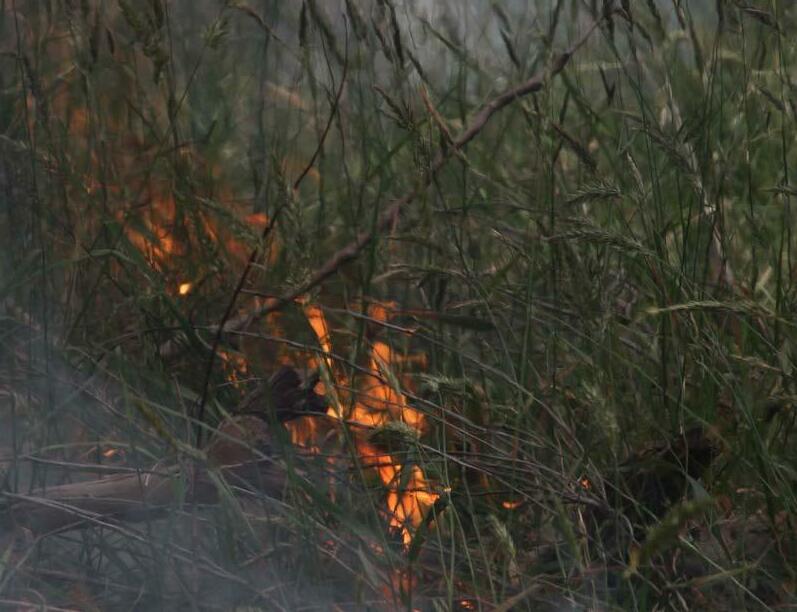
4 minute read
Enabling national fire and emergency services capability
From bushfires to floods, the AFAC National Resource Sharing Centre has been assisting members with resourcing and deployments throughout the 2021–22 severe weather season.
MOLLY PRICE
AFAC
The AFAC National Resource Sharing Centre (NRSC) enables national capability for fire and emergency services across Australia. It facilitates resource deployments to an interstate or international natural hazard emergency event through its established partnerships and national arrangements, as authorised by the Commissioners and Chief Officers Strategic Committee (CCOSC).
Two of its biggest recent focuses have been the bushfires in WA and the floods in Queensland and NSW.
Reflecting on the deployments, AFAC NRSC Manager Luke Purcell said: “The collegial approach of AFAC Members to collaborate and support one another during times of crisis greatly enhances our ability to respond and position essential resources to where they are most needed.”
The AFAC NRSC thanks its members, resource managers and deployed personnel for their support during the severe weather season and their dedication to protecting communities.
PHOTO: JARRAH TREE / WIKIMEDIA COMMONS
PHOTO: FRASER COAST REGIONAL COUNCIL



BUSHFIRE ACTIVITY IN WESTERN AUSTRALIA
In response to a series of significant fires during the recent summer in southwestern WA, several deployments were made through the AFAC NRSC. Throughout December 2021 and January 2022, NSW Rural Fire Service (RFS) cooperated with the WA Department of Fire and Emergency Services (DFES), deploying aircraft through the national aviation resource sharing arrangements1 and in consultation with the National Aerial Firefighting Centre, including: a C130 Large Air Tanker (LAT) the RJ85 LAT two Bell 412s the NSW RFS LAT and Citation lead plane.
In early February, hot, dry and windy conditions in the south-west land division in WA created ongoing severe to catastrophic fire danger, and several major bushfires broke out. With WA resources stretched, the NRSC responded to a request for assistance on 6 February and facilitated the deployment of 34 incident management specialists, together with a COVID Coordinator, from NSW RFS, Fire and Rescue NSW (FRNSW), NSW National Parks and Wildlife Service and Forestry Corporation. Soon after their arrival, conditions eased in WA and the deployment was demobilised early. The NRSC also supported a long-term deployment of mechanical fleet technicians to WA to assist with the servicing and repair of firefighting appliances.
DFES A/Executive Manager Plant and Equipment Scott Hares said that the technicians have been very beneficial in clearing a backlog of work.
“Having visiting personnel work on smaller repairs enabled DFES technicians to concentrate on the longer duration tasks. Our technicians have enjoyed the opportunity to work with and share knowledge with personnel who bring different experiences from their respective jurisdictions,” he said.
Personnel from Country Fire Authority Victoria; Department of Police, Fire and Emergency Management Tasmania; FRNSW; and NSW RFS were deployed on rotation throughout February to April 2022.
1 The Standard Operating Procedure for Redeployment of Aviation Resources and accompanying
Redeployment Agreement provide guidance on Category 1 and Category 2 redeployments of aircraft.
FLOODS IN QUEENSLAND AND NEW SOUTH WALES
Extreme rainfall in late February and early March resulted in widespread flooding across parts of the eastern seaboard.
The AFAC NRSC supported the response to these floods through one of its largest activations to date. On 27 February 2022, following severe weather and significant flooding across multiple catchments within southeast Queensland, the NRSC responded to a request for assistance from Queensland Fire and Emergency Services (QFES). A total of 15 swift water rescue specialists from Fire Rescue Victoria, including command staff and swift water rescue operators, assisted with the flood response in the Beenleigh area between 28 February and 6 March.
Inspector Scott Beasley, Manager for Professional Development, South Eastern Region at QFES said the Victorian crew was received well and helped bolster the state’s swift water capability. “Having extra personnel meant that we could manage fatigue and rest some of our own crews without diminishing our response capability.
“The crew were also able to assist for the first time with damage assessment, paving the way for future resource sharing in this area,” he said.
On 1 March, deployments commenced to NSW following a request for assistance from NSW SES. Over the course of the following weeks, recurrent major flooding severely impacted communities across northern NSW. As of 7 April 2022 NRSC supported deployments of 759 personnel from Victoria, SA, Tasmania, WA and the ACT, Queensland and NT, with more personnel expected to deploy. Resources included swift water rescue technicians and flood boat crews, incident management specialists, field crews, command and administration staff, storm crews and community liaison officers.










